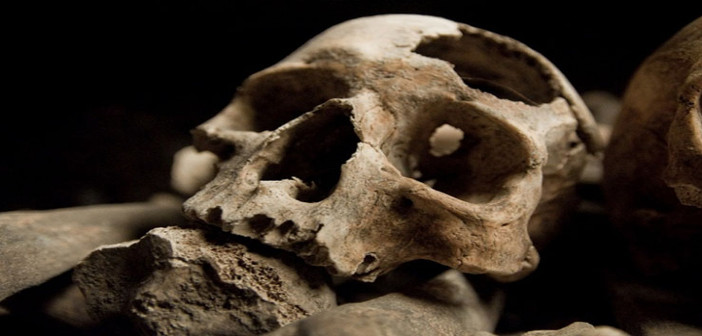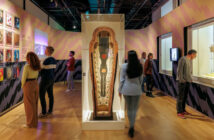CALIFORNIA, United States, Monday March 17, 2015 – In 2010, the skeletons of three African-born slaves who had died more than 300 years before were unearthed during a construction project in Philipsburg, St Martin.
No written records were available, and the names and precise ethnic backgrounds of the long-dead Africans remained a mystery.
At the time of the discovery, scientists could deduce from the skeletons that the three people were between 25 and 40 years old when they died in the late 1600s.
The skulls of each also bore teeth that had been filed down in patterns characteristic of certain African groups, but this alone wasn’t enough to establish where the individuals originated on the African continent.
Now, a newly developed genetic technique has enabled researchers at the Stanford University School of Medicine in the US and the University of Copenhagen, Denmark, to sequence tiny bits of DNA remaining in the skeletons’ teeth.
Using this data, the scientists were able to determine where in Africa the individuals probably lived before they were captured and shipped to St Martin.
The landmark research marks the first time that scientists have been able to use such old, poorly preserved DNA to identify the ethnic origins of long-dead individuals.
The finding paves the way for a greater understanding of the patterns of the trans-Atlantic slave trade, and may transform the general practice of genealogical and historical research, moreover.
“Through the barbarism of the middle passage, millions of people were forcibly removed from Africa and brought to the Americas,” said Carlos Bustamante, professor of genetics at Stanford. “We have long sought to use DNA to understand who they were, where they came from and who, today, shares DNA with those people taken aboard the ships.
“This project has taught us that we cannot only get ancient DNA from tropical samples, but that we can reliably identify their ancestry. This is incredibly exciting to us and opens the door to reclaiming history that is of such importance.”
Professor Bustamante is co-author of a paper describing the research, which is published online this week in PNAS.
He is well-known for his studies of the ethnic background of native Mexicans and Caribbean dwellers, as well as for using genomics to study the patterns of human migration from North Africa to southern Europe.
The researchers used a technique recently devised in the Bustamante laboratory called whole-genome capture to isolate enough ancient DNA from the skeletons to sequence and analyse.
In this way, they learned that one skeleton was that of a man who had likely belonged to a Bantu-speaking group in northern Cameroon. The other two shared similarities with non-Bantu-speaking groups in present-day Nigeria and Ghana.
The study was led by Hannes Schroeder, a molecular anthropologist from the University of Copenhagen, and Stanford postdoctoral scholar Maria Avila-Arcos. The research was initiated in Denmark, and the senior author of the study is Thomas Gilbert, of the University of Copenhagen.
Schroeder and Avila-Arcos isolated DNA from the tooth roots of each of the skeletons. Although the tooth roots were relatively protected from the elements and from external contamination with unrelated genetic material, the DNA was very poorly preserved and highly fragmented, probably because of the centuries of hot, humid conditions to which the skeletons had been exposed. Initial DNA sequencing efforts rendered short stretches of highly damaged DNA.
The scientists then turned to the whole-genome capture technique developed by study co-author Meredith Carpenter, a postdoctoral scholar in the Bustamante laboratory, to extract snippets of ancient DNA from the mixture.
The approach exposes the DNA sample to a genome-wide panel of human-specific RNA molecules to which the degraded DNA in the sample can bind. The effect was likened to stirring a pile of iron-rich dirt with a powerful magnet to isolate the metal from the soil, and it allowed the researchers to concentrate the ancient DNA for more efficient sequencing.
The researchers went on to use a different technique called principal component analysis to compare the DNA sequences of the three Africans with a reference panel of 11 West African populations and identify the distinct ethnic groups from which each individual likely originated.
According to Avila-Arcos: “We were able to determine that, despite the fact that the three individuals were found at the same site, and may even have arrived on the same ship, they had genetic affinities to different populations within Africa. They may have spoken different languages, making communication difficult.
“This makes us reflect on two things: the dynamics of the trans-Atlantic slave trade within Africa, and how this dramatic, ethnic mingling may have influenced communities and identities in the Americas.”




